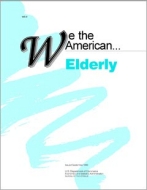We, the American Elderly
We, the American Elderly
Introduction
Diversity and growth are two terms that describe us, America’s elderly population. “The elderly” is a commonly used label for the population 65 years old and over. Yet, we are a heterogeneous population. Our social and economic diversities are too complex to understand based on sweeping generalizations about us.
Our age, gender, race, and ethnic groups have distinctive characteristics, and we have different experiences in aging. Some of us have significant financial and health problems while others of us spend our winters skiing and our summers mountain climbing. Some stay in the paid work force until death while most other have much leisure time which is filled with volunteer work, care of children or the frail elderly, puttering about, or in other activities that are personally satisfying. Others of us are bored or depressed. In short, “the elderly,” like other age groups, are mixed in needs, abilities, and resources.
Growth is another significant aspect of the elderly population, especially the oldest-old. Since the founding of this Nation, the United States has been thought of as a Nation of youth. Eventually, there will be more grandparents than there will be youth.
Because we are increasing in number and living longer into our retirement, the United States has begun to experience the changes in our culture that come with an aging society and affect all of us.
Note: Data in this report differ slightly from the 1990 census counts. The data were modified because some persons reported their age as of a date after April 1, 1990, making them 1 year older than at the time of the census. Adjustments to race classification were also made.
Others in Series
Publication
Publication
Publication




